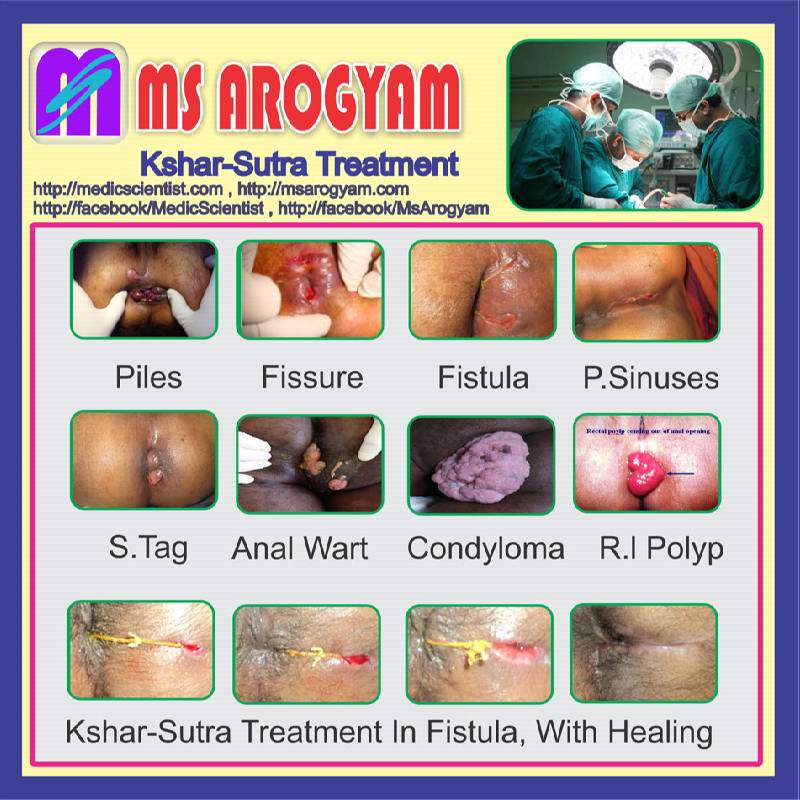Recurrence Fistula In Ano, Cure By Kshar Sutra Ayurveda @ MSAROGYAM By Dr.Dheeraj Yadav
Near Delhi Noida Ghaziabad @ site : msarogyam . com
For More : msarogyam . com
Dr.Dheeraj Yadav @ msarogyam
Ayurveda Kshar Sutra Center
Ph: 09219434343,
Mo: 09412637645, 7417003600
ayurveda, fistula by kshar sutra treatment, fistula ayurvedic, fistula kshar sutra, fistula treatment, kshar sutra, fistula, fistula in ano, fistula recurrence, recurrence of fistula
Abscess in Ano-rectal region: An Ayurvedic view Anorectal abscess Anal abscess; Rectal abscess; Perirectal abscess; Perianal abscess; anal gland abscess; Abscess – anorectal An anorectal abscess is a collection of pus in the area of the anus and rectum.
SUFFERING OF CHRONIC & RECURRING PILES/FISTULA/PILONIDAL SINUS??? NOT CURED YET EVEN AFTER SURGERY??? ----LOOKING FOR SIMPLE,SAFE,SURE & LIFE LONG CURE??? COME FEEL THE HEALING POWER OF "CLASSICAL AYURVEDIC KSHAR SUTRA THERAPY"
“KSHAR-SUTRA Therapy” treatment, makes him one of the most trusted & successful specialist in country for qualitative management of ano-rectal diseases with outstanding results as an outcome of treatment
Preparation of Ksharsutra and the Drugs Required Preparation of Ksharsutra Preparation of Kshar-Sutra is no doubt, a lengthy and difficult task and the collection and preparation .
Ksharsutra treatment is now replacing fistulectomy & other complex surgeries in India. This treatment is curing patients of anorectal fistula & pilonidal cyst permanently. We also takes pride in treating complex / recurrent, complete or partial / horseshoe shape fistula successfully without any incontinence .We have maintained the data of each patient to prove this fact. Ksharsutra treatment don’t require hospitalization, daily dressing, antibiotics & bed rest. It is purely herbal treatment without side effects. World Health Organisation ( W.H.O. ) has accepted the kshar sutra treatment for anal fistula.
Mode of action of Kshara sutra:
Ksharsutra has both cutting & healing action. Kshara sutra works by 4 ways :
- pressure necrosis,
- chemical cauterization by kshar (alkali) ,
- sloughing of the tissue of the walls of the fistulous track
- cutting provides adequate drainage.
It leads to an easy debridement of unhealthy tissue and pus etc. and thus providing a cleaner base for the wound healing of the fistulous track. The Kshara-sutra is changed weekly so that an average pace of cutting of about 0.5-0.8 cm/week is maintained along with healing from behind. Finally the whole track is cut through and the fistula gets healed up with minimal scarring and without any other major complication. Infection is not the only cause in fistula. The structure itself is a big cause of recurrence. As kshar-sutra totally distroys the unhealthy tissue & structure, there is no recurrence .
Ksharsutra has both cutting & healing action. Kshara sutra works by 4 ways :
- pressure necrosis,
- chemical cauterization by kshar (alkali) ,
- sloughing of the tissue of the walls of the fistulous track
- cutting provides adequate drainage.
It leads to an easy debridement of unhealthy tissue and pus etc. and thus providing a cleaner base for the wound healing of the fistulous track. The Kshara-sutra is changed weekly so that an average pace of cutting of about 0.5-0.8 cm/week is maintained along with healing from behind. Finally the whole track is cut through and the fistula gets healed up with minimal scarring and without any other major complication. Infection is not the only cause in fistula. The structure itself is a big cause of recurrence. As kshar-sutra totally distroys the unhealthy tissue & structure, there is no recurrence .
For More : msarogyam . com
Dr.Dheeraj Yadav @ msarogyam
Ayurveda Kshar Sutra Center
Ph: 09219434343,
Mo: 09412637645, 7417003600
More Related Links…..:

.jpg)
.jpg)
.jpg)
.jpg)




































